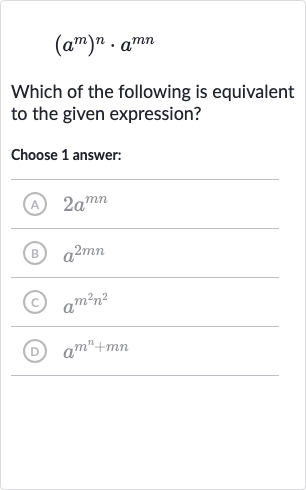Full solution
Q. Which of the following is equivalent to the given expression?Choose answer:(A) (B) (C) (D)
- Apply Power Rule: Use the power of a power rule, which states that .
- Use Product Rule: Now, multiply the result by using the product of powers rule, which states that .
- Factor out Common Factor: Simplify the exponent by factoring out the common factor .
- Simplify Exponent: Since , the expression simplifies further.
- Further Simplification: Finally, we have the simplified expression.
More problems from Compare linear and exponential growth
QuestionGet tutor help
QuestionGet tutor help
QuestionGet tutor help
QuestionGet tutor help
QuestionGet tutor help
QuestionGet tutor help
QuestionGet tutor help

